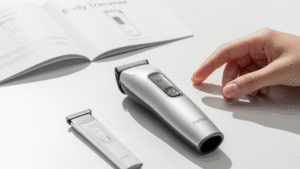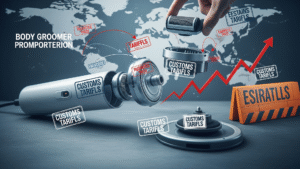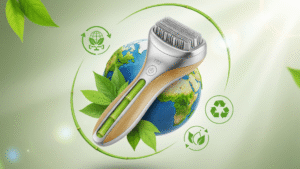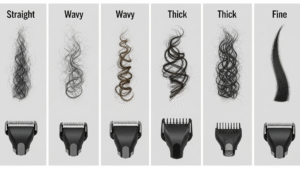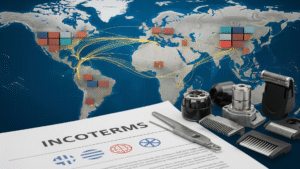In today’s highly competitive business environment, efficiency is the key to success. For body hair trimmer manufacturers, optimizing the procurement process not only reduces costs but also enhances production efficiency and product quality. This article will delve into how to Optimize Your Body Hair Trimmer Procurement Process for Maximum Efficiency, helping you stand out in the fiercely competitive market.
Procurement Process: Establish a Clear Demand Plan
The first step in optimizing the procurement process is to establish a clear demand plan. This includes accurately forecasting market demand, determining the specifications of required raw materials and components, and developing a detailed procurement schedule. A clear demand plan helps businesses avoid blind procurement and inventory buildup, thereby improving capital utilization. By analyzing historical sales data, market trends, and customer feedback, businesses can more accurately predict future demand for body hair trimmers and develop a scientific procurement plan accordingly, ensuring that all necessary materials are available in a timely manner to lay a solid foundation for optimizing your body hair trimmer procurement process.
Procurement Process:Selecting high-quality, reliable suppliers
Selecting the right suppliers is a critical component of optimizing the procurement process. High-quality, reliable suppliers can provide high-quality raw materials and components, ensuring product quality and performance. Companies should establish a comprehensive supplier evaluation system, taking into account factors such as supplier qualifications, reputation, product quality, price, delivery capability, and after-sales service. Through thorough comparison and rigorous selection, choosing suppliers who can provide stable, high-quality materials on a long-term basis is a key step in optimizing your body hair trimmer procurement process. Building good relationships with suppliers ensures the stability and reliability of the supply chain, reducing the risk of production disruptions caused by supplier issues.
Procurement Process: Implementing Efficient Procurement Execution

Efficient procurement execution is the core of optimizing the procurement process. Companies should establish standardized procurement processes, clearly define responsibilities and authorities at each stage, and adopt advanced procurement management tools and technologies to enhance procurement efficiency. For example, implementing an electronic procurement system can enable online generation, approval, and tracking of procurement orders, reducing manual operations and the circulation of paper documents, thereby improving procurement efficiency and accuracy.
Additionally, companies should strengthen communication and coordination with suppliers, monitor order execution in real-time, and ensure materials are delivered on time and in the required quantities to provide robust support for optimizing your body hair trimmer procurement process. Furthermore, establishing a flexible procurement mechanism enables companies to respond to market changes and unforeseen circumstances, ensuring the timeliness and effectiveness of procurement.
Procurement Process: Optimizing inventory management strategies

Efficient inventory management is a crucial component of optimizing procurement processes. Appropriate inventory levels ensure smooth production while avoiding inventory buildup and capital tied up in inventory. Companies should develop scientific inventory management strategies based on production needs and delivery cycles, and adopt advanced inventory management technologies such as the Just-in-Time (JIT) inventory management model to procure materials promptly according to actual production requirements, thereby reducing inventory holding costs. Additionally, companies should conduct regular inventory counts and analyses, promptly address idle and slow-moving materials, and improve inventory turnover rates to optimize their body hair trimmer procurement process and reduce operational costs.
Procurement Process: Continuous Improvement and Evaluation
Procurement process optimization is an ongoing improvement process. Companies should regularly assess and analyze their procurement processes to identify existing issues and bottlenecks, and implement corresponding improvement measures. For example, companies can collect data from the procurement process, such as procurement cycle, procurement costs, and supplier performance, and analyze this data to identify areas for further optimization. Additionally, companies should actively seek feedback from internal employees and suppliers to continuously refine the procurement process and improve procurement efficiency and effectiveness. Through continuous improvement and evaluation, companies can continuously enhance their procurement management capabilities, achieve procurement process optimization, and provide strong support for the company’s long-term development.

